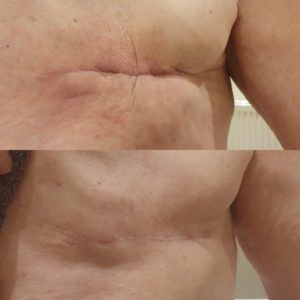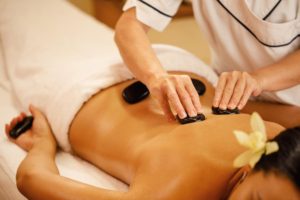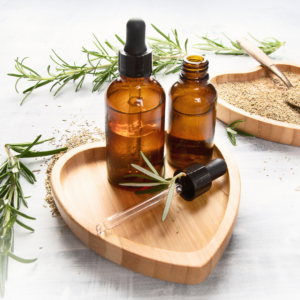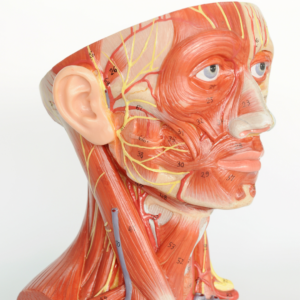The Benefits of Scar Massage Therapy
Scars are more than just marks on the skin—they tell a story of an injury or surgery, often accompanied by physical or emotional challenges. Though scars typically don’t pose health risks, they can cause discomfort, such as pain, tightness, and reduced mobility. Some people may also experience emotional distress related to the appearance of their scars. Scar tissue tends to feel less flexible than normal skin, which can further affect movement and comfort.
Scar Massage Therapy can help. By reducing the buildup of scar tissue, it promotes a softer, more flexible scar, which leads to improved movement and reduced discomfort. This specialised therapy also aids in lessening the appearance of scars, bringing both physical relief and emotional healing. Surgeons often recommend Scar Massage Therapy to stimulate healing and prevent long-term complications.
What to Expect from Scar Massage Therapy
Each scar is unique, requiring a personalized approach to treatment. The size, age, location, and type of scar, along with factors such as skin tension and tissue depth, influence the treatment plan. A holistic approach in scar therapy focuses on improving tissue quality, mobility, and overall functionality, while addressing both the physical and emotional aspects of healing.
During your first session, your therapist will assess the scar and surrounding tissues, identifying any restrictions or adhesions. The treatment will include a range of techniques aimed at encouraging scar tissue to blend with healthy tissue, improving hydration, and enhancing flexibility. Postural adjustments may also be made to support better movement and functionality.
Scar therapy is generally painless, even for newer scars. Most clients describe the sensation as a gentle stretching or release, often accompanied by warmth or tingling. After the session, you may notice improved sensations in previously numb areas, as well as a newfound freedom from the tightness or other symptoms caused by the scar.
How Many Sessions Are Needed?
The number of Scar Massage Therapy sessions needed varies from person to person. While multiple sessions are often recommended for optimal results, especially for older scars, they are not always necessary. For established scars (over 4 months old), a gap of at least three weeks between treatments is ideal to allow the body time to adjust. Newer scars may benefit from weekly or bi-weekly sessions, with each session lasting about 45 minutes to an hour.
Will My Scar Change?
Yes, scar therapy can create significant improvements in both the appearance and function of a scar. Unlike traditional massage techniques, this therapy uses gentle, non-invasive methods to soften adhesions and restrictions,
Unlike traditional massage techniques, this therapy uses gentle, non-invasive methods to soften adhesions and restrictions,
working from the outer layers of tissue to deeper layers. Most scars become flatter, smoother, and less prominent, even after just one treatment. As scar tissue becomes more flexible, symptoms like numbness, pain, itching, and sensitivity often diminish.
The age of a scar doesn’t limit its response to treatment. Scar therapy promotes hydration and tissue health, minimizing the lumps and bumps associated with scars and preventing excessive stiffness.
Can Older Scars Be Treated?
Absolutely. Scar Massage Therapy is effective on scars of all ages, including those that are years or even decades old. While the surface of a scar may appear healed, deeper layers of tissue can still be affected by adhesions or tension. Scar therapy addresses both surface and deeper tissues, making it an ideal treatment for scars resulting from accidents, surgeries, or cosmetic procedures.
Scars that can benefit from therapy include:
- Hip replacements
- Traffic accident injuries
- Skin grafts
- Heart surgeries
- Keyhole surgeries
- Facial scars
- Knee, foot, or abdominal surgeries
- Appendix or gallbladder removal
- Caesarean sections
- Hysterectomies
- Breast surgeries (including post-cancer treatment)
- Cosmetic surgeries (tummy tucks, breast augmentation)
- Spinal surgeries
- Burns and amputations
Treatment can begin once the scar is fully healed, dry, and free from infection.
When Can I Start Scar Therapy for a New Scar?
For newer scars, you should wait until the wound is fully closed, dry, and free from inflammation or infection before starting direct scar therapy. Typically, this is around 8-10 weeks post-op or when you’ve been discharged by your doctor. If you’re cleared for soft tissue therapy or massage, you can begin scar therapy treatments.
How to Book
Scar therapy sessions are available from 60 to 75 minutes, starting at £130. To book an appointment or learn more about the treatment options, call 0208 672 4455 to speak with Elaine, who will help guide your treatment plan based on your specific needs.
Elaine’s qualifications include TMD therapy (intra and extra oral massage), Oncology Massage Therapy, Manual Lymphatic Drainage (MLD), Remedial Massage, Myofascial Release, Pre and Post Natal Massage, and specialized training in scar therapy techniques, including post-cancer care and post-surgical rehabilitation.
















